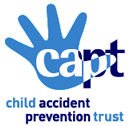 Every year in England, an average of 62 children under five years die from injuries in and around the home and there are around 40,000 emergency hospital admissions for children in this age group.
Every year in England, an average of 62 children under five years die from injuries in and around the home and there are around 40,000 emergency hospital admissions for children in this age group.
Unintentional injuries to the under-fives result in around 450,000 visits to Accident and Emergency (A&E) departments.[i] [ii] Injury rates are 45% higher among disadvantaged families.
Public Health England (PHE) has identified five priority injury types for children under five: choking, suffocation and strangulation; falls; burns and scalds; poisoning and drowning.[iii]
Health visiting team is in an ideal position to help reduce these injuries which is why the issue is one of the service’s six High Impact Areas.
There are routine opportunities to provide injury prevention advice within the core Healthy Child Programme (CHP), especially for practitioners that visit families in their own homes.
The ‘Red Book’ can be used as a prompt for discussion about safety.[iv] The trick is to slot in safety messages while you’re covering other things and help mums and dads stay a few steps ahead as their child develops. A surprising fact can catch a parent’s attention.
Exploring the child’s development with parents is a natural way to note how hazards change with age. For example, how the risk of scalds from hot drinks increase as the baby begins to be able to reach out and grab.
Referrals to other relevant services such as agencies that can supply and install home safety equipment can also lever important resources, especially to disadvantaged families. [v]
Health visiting also has an important role in advocating for child safety in local areas as well as playing a leading role in community campaigns including Child Safety Week.
Health visitors, community nursery nurses, family nurses and children’s centre colleagues use CAPT’s extensive resources to support their work. www.CAPT.org.uk
Kevin Lowe Head of Consultancy Services at the Child Accident Prevention Trust (CAPT)
Profile
Kevin has worked in the children’s sector for many years and has a background in social work. In 2014 he worked with Public Health England and RoSPA to produce guidance to local authorities and their partners on reducing unintentional injuries among children under five years. He is currently developing resources on accident prevention for health visitors with the Institute of Health Visiting (iHV).
[i] Hospital Episode Statistics (HES). Copyright © 2014. Re-used with the permission of The Health and Social Care Information Centre. All rights reserved.
[ii] Department for Trade and Industry (DTI) (2002) 24th (Final) Report of the home and leisure accident surveillance system: 2000, 2001 and 2002 data. DTI.
[iii] Public Health England (2014) Reducing Unintentional Injuries in and around the home among children under five years. PHE.
[iv] Royal College of Paediatrics and Child Health. The National Standard PCHR. Harlow, 2009.
